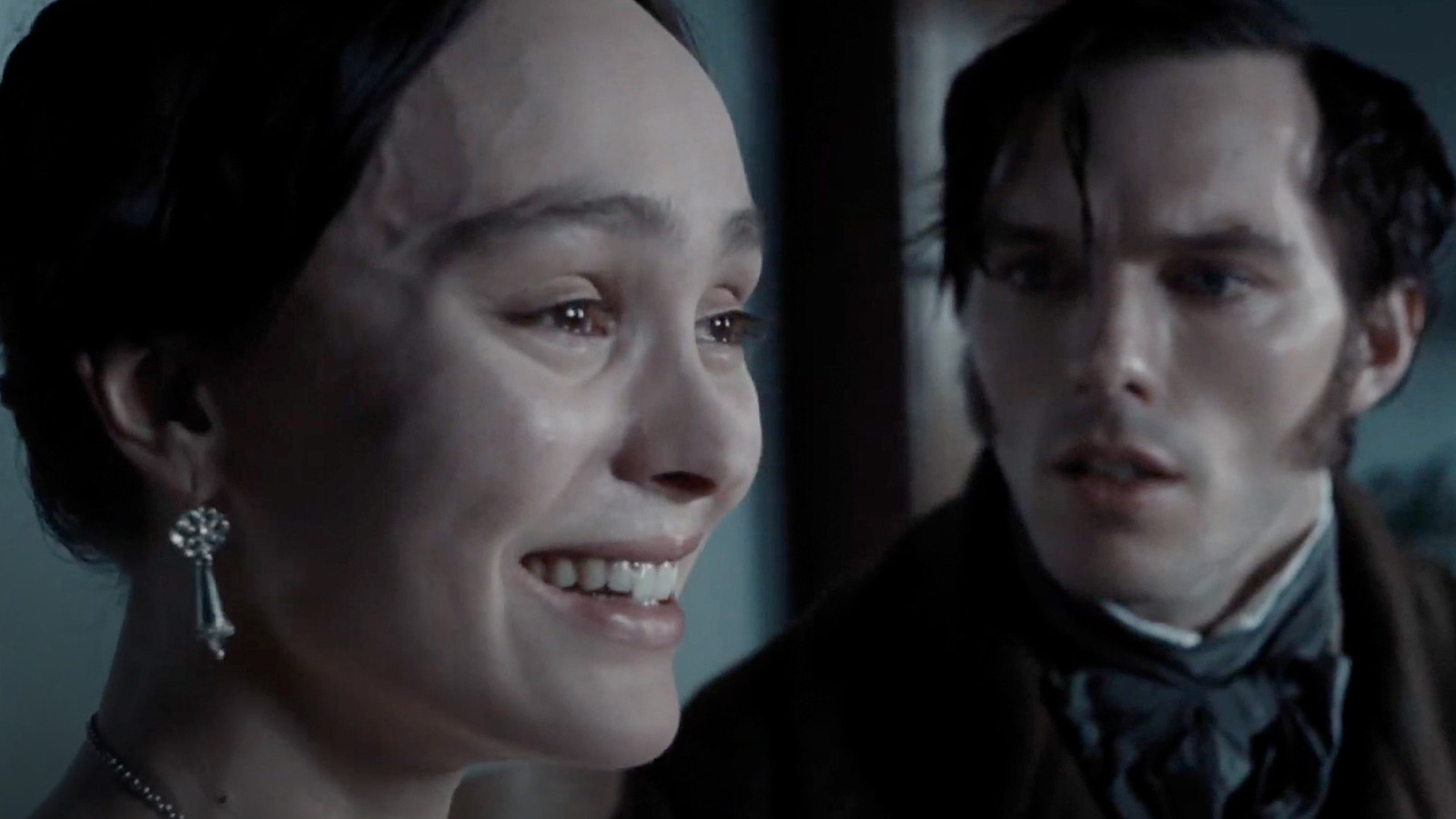
As a result of we all know Eggers can and has directed historically thrilling motion, the dearth of motion in “Nosferatu” is a transparent inventive selection. The most effective examples of Eggers rejecting motion comes early within the movie, when Thomas Hutter makes an attempt to flee Depend Orlok’s citadel. Different administrators might have filmed this sequence with pace and depth, maybe alternating close-ups with a shortly roving digicam. This definitely would’ve made the scene thrilling, and would’ve put the viewers in Thomas’ sneakers instantly. As a substitute, Eggers movies this determined man and his determined actions from a distance, framing him in extensive photographs the place he is dominated by his foreboding jail. When he does transfer shortly, the digicam tends to slowly pan with him, capturing the motion beat however making it really feel helpless and pitiful. We aren’t in Thomas’ sneakers. We aren’t feeling his adrenaline rush. We’re an remoted observer, watching from afar as he’s utterly and completely powerless within the face of one thing that makes each decided human motion really feel completely ineffective.
Each human motion in “Nosferatu” feels … small. Solely the omnipotent Orlok is allowed to dominate the body, and the movie solely employs quick reducing or different typical instruments of motion cinema when he emerges from the shadows to prey upon a sufferer. The vampire is filmed with the visible language related to energy, whereas each human character may as properly be an ant crawling by the dust. We watch them wander, they usually look so weak and so alone.
The extensive photographs, the static photographs, and the sleek however glacial digicam actions proceed all through your complete film. It ought to be thrilling when the “males on a mission” collect for the ultimate journey into Orlok’s lair, however Eggers would not enable it to be. In spite of everything, their quest is a wild goose chase, and the vampire’s defeat comes elsewhere, by way of a personality who realizes the one technique to defeat him is to give up totally. To provide in to inaction.
Numerous horror films are about defeat, and about how frail we’re within the face of issues that wish to hurt us. However “Nosferatu” is the uncommon movie to truly make us really feel it in our bones.
I talked about this (and the remainder of my favourite movies of 2024) on the most recent episode of the /Movie Every day podcast, which you’ll be able to hearken to under:
You may subscribe to /Movie Every day on Apple Podcasts, Overcast, Spotify, or wherever you get your podcasts, and ship your suggestions, questions, feedback, considerations, and mailbag matters to us at bpearson@slashfilm.com. Please depart your title and basic geographic location in case we point out your e-mail on the air.



As a result of we all know Eggers can and has directed historically thrilling motion, the dearth of motion in “Nosferatu” is a transparent inventive selection. The most effective examples of Eggers rejecting motion comes early within the movie, when Thomas Hutter makes an attempt to flee Depend Orlok’s citadel. Different administrators might have filmed this sequence with pace and depth, maybe alternating close-ups with a shortly roving digicam. This definitely would’ve made the scene thrilling, and would’ve put the viewers in Thomas’ sneakers instantly. As a substitute, Eggers movies this determined man and his determined actions from a distance, framing him in extensive photographs the place he is dominated by his foreboding jail. When he does transfer shortly, the digicam tends to slowly pan with him, capturing the motion beat however making it really feel helpless and pitiful. We aren’t in Thomas’ sneakers. We aren’t feeling his adrenaline rush. We’re an remoted observer, watching from afar as he’s utterly and completely powerless within the face of one thing that makes each decided human motion really feel completely ineffective.
Each human motion in “Nosferatu” feels … small. Solely the omnipotent Orlok is allowed to dominate the body, and the movie solely employs quick reducing or different typical instruments of motion cinema when he emerges from the shadows to prey upon a sufferer. The vampire is filmed with the visible language related to energy, whereas each human character may as properly be an ant crawling by the dust. We watch them wander, they usually look so weak and so alone.
The extensive photographs, the static photographs, and the sleek however glacial digicam actions proceed all through your complete film. It ought to be thrilling when the “males on a mission” collect for the ultimate journey into Orlok’s lair, however Eggers would not enable it to be. In spite of everything, their quest is a wild goose chase, and the vampire’s defeat comes elsewhere, by way of a personality who realizes the one technique to defeat him is to give up totally. To provide in to inaction.
Numerous horror films are about defeat, and about how frail we’re within the face of issues that wish to hurt us. However “Nosferatu” is the uncommon movie to truly make us really feel it in our bones.
I talked about this (and the remainder of my favourite movies of 2024) on the most recent episode of the /Movie Every day podcast, which you’ll be able to hearken to under:
You may subscribe to /Movie Every day on Apple Podcasts, Overcast, Spotify, or wherever you get your podcasts, and ship your suggestions, questions, feedback, considerations, and mailbag matters to us at bpearson@slashfilm.com. Please depart your title and basic geographic location in case we point out your e-mail on the air.



















